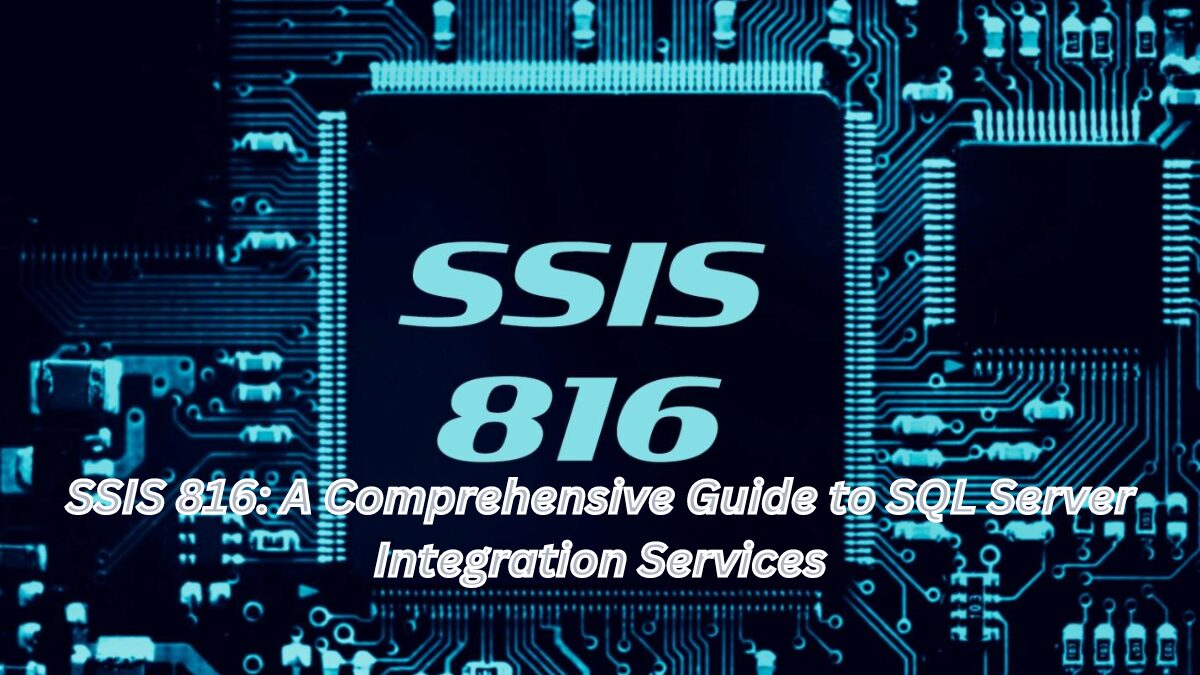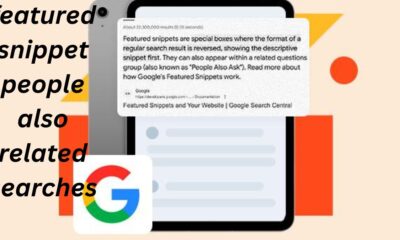Blog
Exploring Linuxia: The Future of Open-Source Operating Systems

Introduction
Linuxia is an innovative, open-source operating system that has been making waves in the tech world. Built on the solid foundation of the Linux kernel, Linuxia aims to provide users with a robust, customizable, and user-friendly experience. Whether you are a seasoned programmer or a casual user, Linuxia has something to offer everyone.
Brief History of Linuxia
The journey of Linuxia began with a group of passionate developers who envisioned an operating system that combined the best aspects of existing Linux distributions with unique features designed to enhance user experience. Over the years, Linuxia has grown from a small project into a comprehensive OS, thanks to its supportive community and continuous development.
The Core Features of Linuxia
Open-Source Nature
One of the most significant advantages of Linuxia is its open-source nature. This means that anyone can view, modify, and distribute the code, fostering a collaborative environment where improvements and innovations are continuously integrated.
User-Friendly Interface
Linuxia is designed with the user in mind. It boasts a sleek, intuitive interface that makes it easy for both newcomers and experienced users to navigate. The desktop environment is clean, with a logical layout that ensures users can find what they need quickly and efficiently.
High Customizability
Customization is at the heart of Linuxia. Users can tweak almost every aspect of the OS to suit their preferences, from the appearance of the desktop to the functionalities of various applications. This flexibility makes Linuxia a favorite among users who want a personalized computing experience.
Linuxia vs. Other Operating Systems
Comparison with Windows
While Windows is known for its widespread use and compatibility, Linuxia offers a level of customization and security that Windows often lacks. Moreover, Linuxia is free, eliminating the need for costly licenses.
Comparison with macOS
macOS is praised for its design and stability, but Linuxia matches these strengths with its open-source advantages and broader hardware compatibility. Linuxia also provides a more flexible environment for software development.
Comparison with Other Linux Distributions
Linuxia sets itself apart from other Linux distributions by focusing on ease of use and a supportive community. While distributions like Ubuntu and Fedora are well-known, Linuxia combines user-friendly features with advanced capabilities that appeal to both beginners and experts.
Why Choose Linuxia?
Security Benefits
Linuxia is renowned for its security. The open-source nature means vulnerabilities are quickly identified and patched by the community. Additionally, Linuxia’s architecture minimizes the risk of malware and viruses, making it a secure choice for users.
Cost Efficiency
Being an open-source OS, Linuxia is free to download and use. This cost efficiency extends to the software ecosystem, where many applications are also available for free, reducing overall IT expenses.
Community Support
The Linuxia community is one of its greatest strengths. Users can rely on a vast network of forums, guides, and user groups to find support and share knowledge. This community-driven approach ensures that help is always available when needed.
Installation and Setup
System Requirements
Before installing Linuxia, ensure your system meets the minimum requirements: a modern processor, at least 2GB of RAM, and 20GB of disk space. These modest requirements make Linuxia accessible to a wide range of hardware.
Step-by-Step Installation Guide
- Download the Linuxia ISO: Visit the official Linuxia website and download the latest ISO file.
- Create a Bootable USB: Use a tool like Rufus to create a bootable USB drive with the ISO file.
- Boot from USB: Restart your computer and boot from the USB drive.
- Follow Installation Prompts: Select your language, keyboard layout, and other preferences.
- Partition Your Disk: Choose how you want to partition your disk, whether you want to dual-boot with another OS or use the entire disk for Linuxia.
- Complete Installation: Follow the on-screen instructions to complete the installation. Reboot when prompted.
Initial Setup Tips
Once Linuxia is installed, take some time to explore the settings and customize your environment. Install any necessary drivers, set up your user accounts, and familiarize yourself with the software center to find and install additional applications.
Navigating the Linuxia Desktop Environment
Overview of the Desktop
The Linuxia desktop is designed to be intuitive. The main menu provides access to applications, settings, and system tools. A taskbar displays open applications and system notifications, while the desktop itself can be customized with widgets and shortcuts.
Customizing Your Desktop
Linuxia allows you to personalize your desktop extensively. Change the wallpaper, adjust the themes and icons, and configure the taskbar to suit your workflow. These customization options make it easy to create a workspace that is uniquely yours.
Managing Applications
Managing applications in Linuxia is straightforward. Use the software center to install new programs, update existing ones, and remove those you no longer need. The package manager and terminal also provide powerful ways to manage software.
Essential Applications for Linuxia
Productivity Tools
Linuxia comes with a suite of productivity tools, including LibreOffice for office tasks, Thunderbird for email, and various calendar and note-taking applications. These tools ensure you can stay productive right from the start.
Multimedia Software
For multimedia needs, Linuxia includes applications like VLC for video playback, Audacity for audio editing, and GIMP for image manipulation. These powerful tools cater to all your multimedia requirements.
System Utilities
Linuxia provides several system utilities to help you manage your system effectively. Tools for system monitoring, disk management, and backups are all readily available, ensuring your system runs smoothly.
Advanced Features of Linuxia
Terminal and Command Line
The terminal is a powerful feature of Linuxia, allowing users to execute commands, install software, and manage the system with precision. For those comfortable with command-line interfaces, this feature is invaluable.
Networking Capabilities
Linuxia excels in networking. Whether you need to set up a home network, manage server connections, or configure VPNs, Linuxia provides the tools and flexibility to do so efficiently.
Virtualization Options
Virtualization is another strong suit of Linuxia. With tools like VirtualBox and KVM, you can run multiple operating systems on a single machine, making it an excellent choice for testing and development environments.
Linuxia for Developers
Development Tools
Linuxia is a developer’s paradise. It supports a wide range of development tools such as IDEs (Integrated Development Environments), version control systems like Git, and numerous compilers and libraries.
Programming Languages Supported
Whether you code in Python, Java, C++, or any other language, Linuxia supports it. The OS comes with a plethora of pre-installed languages and easy access to many more via repositories.
Setting Up a Development Environment
Setting up a development environment in Linuxia is straightforward. Install your preferred IDE, configure version control, and start coding. The flexibility and control Linuxia offers make it an ideal platform for development.
Linuxia in the Workplace
Business Applications
Linuxia is not just for personal use; it’s also a powerful tool for businesses. Applications for project management, communication, and collaboration are readily available, helping businesses run smoothly and efficiently.
Case Studies of Corporate Adoption
Several corporations have adopted Linuxia due to its reliability and cost-effectiveness. Case studies highlight how businesses have benefited from switching to Linuxia, showcasing improvements in security, efficiency, and cost savings.
Benefits for Enterprises
For enterprises, Linuxia offers robust security, scalability, and support for enterprise-level applications. Its open-source nature means that businesses can customize the OS to meet their specific needs, ensuring a tailored fit.
Troubleshooting and Support
Common Issues and Fixes
Like any OS, Linuxia may encounter issues. Common problems include hardware compatibility, software installation errors, and configuration issues. Fortunately, solutions are often just a quick search away, thanks to the extensive documentation and community support.
How to Get Help
If you run into trouble, there are plenty of resources available. The Linuxia website offers comprehensive guides and tutorials. Additionally, community forums and social media groups provide platforms to ask questions and share solutions.
Online Communities and Forums
The Linuxia community is active and welcoming. Joining forums and online communities can be incredibly helpful. These platforms allow you to connect with other users, share experiences, and find solutions to any problems you might encounter.
Future of Linuxia
Upcoming Features
The development team behind Linuxia is always working on new features. Upcoming releases promise enhancements in performance, additional customization options, and new applications to further improve the user experience.
Development Roadmap
The Linuxia roadmap is publicly available, detailing planned features and improvements. This transparency allows users to stay informed about what to expect in future updates.
Community Involvement
Community involvement is crucial to the success of Linuxia. Users are encouraged to participate in the development process, whether by testing new features, reporting bugs, or contributing code.
Linuxia for Education
Use in Schools and Universities
Linuxia is a fantastic tool for educational institutions. Its cost-effectiveness and wide range of educational software make it a great choice for schools and universities looking to provide high-quality IT resources on a budget.
Educational Software
Linuxia includes a variety of educational applications, from programming tools for students to administrative software for educators. These tools enhance the learning experience and streamline administrative tasks.
Student and Teacher Resources
Resources for both students and teachers are plentiful. Tutorials, guides, and forums are available to help users get the most out of Linuxia, ensuring a supportive learning environment.
Contributing to Linuxia
How to Get Involved
Getting involved with Linuxia is easy. Whether you’re a developer, writer, or simply a passionate user, there are many ways to contribute. Visit the Linuxia website to find out how you can participate.
Contribution Guidelines
Linuxia has clear contribution guidelines to ensure that all contributions are meaningful and beneficial. These guidelines cover coding standards, documentation practices, and other important aspects of contributing to the project.
Open Source Projects
There are numerous open-source projects associated with Linuxia. Contributing to these projects not only helps improve Linuxia but also allows contributors to gain valuable experience and skills.
Conclusion
Linuxia represents the future of open-source operating systems. With its user-friendly interface, high customizability, and robust security features, it’s an excellent choice for both personal and professional use. The vibrant community and continuous development ensure that Linuxia will continue to evolve, meeting the needs of users worldwide.
The Comprehensive Guide to Understanding [uomen]: Empowering Women in All Aspects of Life
FAQs
What is Linuxia?
Linuxia is an open-source operating system designed to be user-friendly and highly customizable, built on the Linux kernel.
How does Linuxia differ from other Linux distributions?
Linuxia sets itself apart with its focus on ease of use, a supportive community, and advanced features tailored for both beginners and experienced users.
Is Linuxia suitable for beginners?
Yes, Linuxia is designed to be accessible to beginners, with a user-friendly interface and extensive community support.
Can Linuxia run Windows applications?
While Linuxia cannot run Windows applications natively, compatibility tools like Wine allow many Windows applications to run on Linuxia.
How can I contribute to Linuxia?
You can contribute by joining the community, reporting bugs, writing documentation, or contributing code. Visit the Linuxia website for more details on how to get involved.
Blog
Finley Aaron Love Lockwood: The Life and Legacy of Elvis Presley’s Granddaughter

Introduction
Finley Aaron Love Lockwood is a name that resonates with legacy and history. As the granddaughter of the legendary Elvis Presley, she carries a significant heritage that has shaped her life from the very beginning. This article delves into the fascinating story of Finley Aaron Love Lockwood, exploring her family background, early life, and the impact of her famous lineage.
Family Background
Finley is a descendant of the iconic Presley family, a name synonymous with rock and roll and cultural impact. Her grandfather, Elvis Presley, known as the King of Rock and Roll, left an indelible mark on the music industry and popular culture. Her mother, Lisa Marie Presley, continued the family’s musical tradition while also navigating the complexities of fame.
Early Life
Born on October 7, 2008, Finley Aaron Love Lockwood entered the world alongside her twin sister, Harper Vivienne Ann Lockwood. The twins were born to Lisa Marie Presley and her then-husband, Michael Lockwood. From their early years, Finley and Harper have been in the spotlight, garnering public interest due to their famous heritage.
The Presley Legacy
Elvis Presley’s influence extends beyond his music, shaping the lives of his descendants. For Finley, being a Presley means living up to a name that carries immense cultural weight. The Presley legacy is a double-edged sword, offering opportunities but also posing significant expectations.
Parents: Lisa Marie Presley and Michael Lockwood
Lisa Marie Presley, Finley’s mother, has had a multifaceted career as a singer-songwriter. Her personal life, including her relationships and struggles, has often been in the public eye. Michael Lockwood, Finley’s father, is a musician and producer. Together, they have provided a nurturing yet high-profile environment for Finley and her sister.
Grandmother: Priscilla Presley
Priscilla Presley, Finley’s grandmother, has been a guiding force in the family. Known for her own contributions to entertainment and philanthropy, Priscilla has played a significant role in Finley’s upbringing. Her influence helps bridge the generational gap, keeping Elvis’s memory alive while supporting her grandchildren.
Public Appearances
Finley and her twin sister made their first public appearances at a young age. Their presence at various family and public events has always attracted media attention. Despite the intense public scrutiny, the family strives to maintain a sense of normalcy for the twins.
Family Dynamics
Family is at the core of Finley’s life. Her relationship with her mother, Lisa Marie, is pivotal, with Lisa Marie’s experiences in the public eye providing valuable lessons. Finley’s bond with her twin sister, Harper, is equally strong, offering mutual support in their unique journey. The influence of her father, Michael Lockwood, adds another layer to her upbringing, blending musical talent and parental guidance.
Education and Hobbies
Finley’s education is a priority for the family, ensuring she has a well-rounded upbringing. Besides academics, she engages in various hobbies and extracurricular activities, which help her develop her interests and talents. Whether it’s music, sports, or arts, Finley’s activities are diverse, reflecting her multifaceted personality.
Challenges and Triumphs
Living up to the Presley name is no small feat. Finley faces the challenge of balancing her personal identity with the public’s expectations. However, she also enjoys the unique opportunities that come with her heritage. Triumphs in her young life include finding her own passions and navigating the complexities of fame with grace.
Media Attention
The media’s fascination with the Presley family extends to Finley. Stories and images of her often appear in tabloids and online platforms. While this attention can be overwhelming, it also highlights the enduring interest in Elvis Presley’s descendants. The family’s approach to media scrutiny is to provide as much normalcy and privacy as possible.
Social Media Presence
In today’s digital age, social media presence is almost inevitable. However, the Lockwood family is cautious about Finley’s online exposure. They prioritize her privacy and ensure that any online presence is carefully managed. This approach helps protect Finley from the potential pitfalls of social media fame.
Future Prospects
As Finley grows, speculation about her future increases. Will she follow in her grandfather’s musical footsteps, or carve out a unique path of her own? Whatever her choice, the legacy she inherits provides a strong foundation. The possibilities are endless, and the world watches with keen interest.
Conclusion
Finley Aaron Love Lockwood’s life is a blend of heritage, fame, and potential. As the granddaughter of Elvis Presley, she carries a name that opens doors while also presenting challenges. Her journey is one of navigating public attention, embracing her legacy, and forging her path. Finley’s story is still unfolding, and it promises to be as captivating as the Presley legacy itself.
Danielzinho: A Rising Star in the World of Football
FAQs
Who are Finley Aaron Love Lockwood’s parents?
Finley’s parents are Lisa Marie Presley, the daughter of Elvis Presley, and Michael Lockwood, a musician and producer.
What is Finley’s relationship with the Presley family?
Finley is closely related to the Presley family, being the granddaughter of Elvis Presley and Priscilla Presley. She has a strong bond with her mother, Lisa Marie Presley, and her twin sister, Harper.
How does Finley handle public attention?
Finley handles public attention with the support of her family, who prioritize privacy and normalcy. Despite the media interest, they strive to maintain a balanced and private upbringing.
Does Finley have a social media presence?
The Lockwood family is cautious about Finley’s social media presence, ensuring her privacy is protected. Any online presence is carefully managed to avoid the pitfalls of social media fame.
What are Finley’s future plans?
While Finley’s future is still unfolding, there is speculation about her potential career paths. Whether she chooses to follow in the Presley musical legacy or carve out her unique path, her heritage provides a strong foundation for success
Blog
SSIS 816: A Comprehensive Guide to SQL Server Integration Services

Introduction
Welcome to the ultimate guide on SSIS 816! If you’re delving into the world of data integration and management, understanding SQL Server Integration Services (SSIS) is crucial. SSIS 816 stands out as a robust tool for handling complex data transformation and migration tasks. But what exactly is SSIS 816, and why is it so important?
What is SSIS 816?
SSIS 816 is the latest version of Microsoft’s SQL Server Integration Services, a platform for building enterprise-level data integration and data transformations solutions. SSIS 816 offers enhanced features and improvements that streamline data management, making it a go-to for businesses looking to optimize their data processes.
Importance of SSIS in Data Integration
Data integration is vital for businesses to consolidate data from various sources, ensuring that they have a unified and accurate dataset. SSIS simplifies this process by providing powerful tools to extract, transform, and load (ETL) data across different databases and systems.
Understanding SSIS 816
SSIS 816 brings several new features and enhancements that differentiate it from its predecessors. These include improved performance, more extensive connectivity options, and enhanced scripting capabilities.
Features of SSIS 816
Some of the standout features include:
- Enhanced Data Flow Components: More efficient data processing capabilities.
- Advanced Scripting Options: Customizable scripting for tailored solutions.
- Better Integration with Azure: Streamlined cloud operations and hybrid scenarios.
Comparison with Previous Versions
Compared to earlier versions, SSIS 816 provides a more intuitive interface, faster processing speeds, and improved error handling mechanisms. These enhancements make it easier for users to create and manage ETL packages.
Installing SSIS 816
System Requirements
Before diving into installation, ensure your system meets the necessary requirements:
- Operating System: Windows Server 2016 or later
- Processor: 1.4 GHz or faster
- RAM: Minimum 4 GB (8 GB recommended)
- Disk Space: At least 2 GB of available space
Step-by-Step Installation Guide
- Download the Installer: Get the latest version from the Microsoft website.
- Run the Installer: Follow the prompts to install SSIS 816.
- Configure the Installation: Choose the components you need.
- Complete the Installation: Finish and verify the setup.
Core Components of SSIS 816
Understanding the core components of SSIS 816 is essential for creating effective ETL solutions.
Control Flow
Control Flow manages the workflow of your SSIS package, controlling the execution order of tasks.
Data Flow
Data Flow is where the actual data transformation happens, allowing you to manipulate and move data between sources and destinations.
Event Handlers
Event Handlers provide a way to manage actions triggered by package events, such as errors or completion.
Package Explorer
Package Explorer offers a tree view of all components in your package, facilitating easy navigation and management.
Creating Your First SSIS Package
Creating an SSIS package involves several steps:
Setting Up a New Project
- Open SQL Server Data Tools (SSDT): Create a new SSIS project.
- Define the Package: Name your package and set its properties.
Designing a Basic Data Flow
- Add Data Flow Task: Drag it onto the Control Flow canvas.
- Configure Data Sources and Destinations: Specify where data is coming from and where it’s going.
- Add Transformations: Include any necessary data transformation tasks.
Executing the Package
Run your package to ensure it functions correctly. Check for errors and verify the data has moved as expected.
Advanced SSIS 816 Features
SSIS 816 offers advanced features for more complex ETL scenarios:
Data Transformation Tasks
Use tasks like Lookup, Merge Join, and Aggregate to manipulate data efficiently.
Scripting and Customization
Script tasks and components allow for custom code to handle unique data processing needs.
Error Handling and Logging
Implement robust error handling and logging to monitor package execution and diagnose issues.
Data Sources and Destinations
SSIS 816 supports a wide variety of data sources and destinations, making it a versatile tool for data integration.
Connecting to Various Data Sources
Connect to databases like SQL Server, Oracle, and MySQL, as well as flat files, Excel, and web services.
Configuring Data Destinations
Specify where transformed data will be stored, whether it’s a database, a file, or another system.
Performance Tuning in SSIS 816
Optimizing the performance of your SSIS packages is crucial for handling large datasets efficiently.
Optimizing Data Flow
Use techniques like blocking transformations sparingly and optimizing buffer size settings.
Using Parallel Execution
Leverage parallel execution to speed up data processing tasks.
Managing Resources Efficiently
Monitor resource usage and adjust package configurations to balance performance and resource consumption.
SSIS 816 Security
Security is paramount in data integration. SSIS 816 provides several mechanisms to ensure data security.
Implementing Package Protection Levels
Choose appropriate protection levels to secure sensitive data within your packages.
Secure Data Transfer
Encrypt data transfers to protect against unauthorized access.
User Roles and Permissions
Define roles and permissions to control access to SSIS packages and components.
Integration with Other Microsoft Tools
SSIS 816 integrates seamlessly with other Microsoft tools, enhancing its functionality.
SSIS and SQL Server
Use SSIS for SQL Server to streamline data management tasks within your SQL environment.
SSIS and Azure
Integrate with Azure for cloud-based data processing and storage solutions.
SSIS and Power BI
Feed data into Power BI for advanced analytics and reporting.
SSIS 816 Deployment
Deploying SSIS packages requires careful planning and execution.
Preparing for Deployment
Ensure your packages are thoroughly tested and optimized before deployment.
Deploying Packages
Use the SSIS catalog and deployment wizard to deploy packages to your target environment.
Monitoring and Managing Deployed Packages
Monitor package execution and performance using SQL Server Management Studio (SSMS).
SSIS 816 in Real-World Applications
SSIS 816 is used in various industries to solve complex data integration challenges.
Case Studies
Explore real-world examples of SSIS in action, such as data migration projects and ETL processes in large enterprises.
Best Practices
Follow best practices for designing, deploying, and maintaining SSIS packages to ensure reliability and performance.
Troubleshooting SSIS 816
Despite its robustness, you may encounter issues with SSIS 816. Here’s how to handle common problems.
Common Issues and Solutions
Address issues like data truncation, connection failures, and performance bottlenecks.
Debugging Techniques
Use breakpoints, data viewers, and logging to identify and resolve issues in your SSIS packages.
Future of SSIS
The future of SSIS is bright, with ongoing developments and enhancements.
Upcoming Features
Look forward to new features and improvements in future SSIS releases.
Trends in Data Integration
Stay informed about trends like AI integration, cloud-based ETL, and real-time data processing.
Conclusion
SSIS 816 is a powerful tool for data integration and transformation, offering a wide range of features and capabilities. Whether you’re a novice or an experienced user, understanding and leveraging SSIS 816 can significantly enhance your data management processes.
The Ultimate Guide to Finding the Perfect CTO in New Canaan
FAQs
1. What is the primary purpose of SSIS 816?
SSIS 816 is designed to handle data integration and transformation tasks, making it easier to move and process data across various systems.
2. Can SSIS 816 be used with cloud services?
Yes, SSIS 816 integrates well with Azure and other cloud services, providing flexible and scalable data solutions.
3. How do I troubleshoot performance issues in SSIS 816?
Optimize data flow, use parallel execution, and monitor resource usage to troubleshoot performance issues in SSIS 816.
4. Is SSIS 816 suitable for real-time data processing?
While SSIS 816 is primarily designed for batch processing, it can handle real-time data processing with the right configurations.
5. What are some best practices for deploying SSIS packages?
Thorough testing, optimizing packages, and using the SSIS catalog for deployment are key best practices for deploying SSIS packages.
Blog
Mastering the Utopia Origin Map: Your Ultimate Guide

Introduction
If you’ve been diving into the enchanting world of Utopia Origin, you know how crucial it is to master the map. This comprehensive guide will walk you through everything you need to know to navigate efficiently, find resources, and thrive in this captivating game.
Understanding Utopia Origin
What is Utopia Origin?
Utopia Origin is a sandbox survival game that blends elements of exploration, crafting, and combat. Players are transported to a mystical island filled with unique creatures, hidden treasures, and challenging quests.
Game Mechanics and Objectives
The primary goal in Utopia Origin is to survive, build, and explore. You’ll gather resources, craft tools and structures, and embark on quests to uncover the island’s secrets.
Introduction to the Utopia Origin Map
Basic Layout of the Map
The Utopia Origin map is vast and diverse, featuring various regions each with unique biomes and landmarks. Understanding the basic layout is essential for efficient navigation.
Key Features and Landmarks
Landmarks such as mountains, rivers, and ancient ruins are scattered across the map, serving as reference points that help you orient yourself and plan your travels.
Navigating the Utopia Origin Map
Using the Map Interface
The map interface in Utopia Origin is user-friendly. You can zoom in and out to get a better view of your surroundings and mark important locations for future reference.
Importance of Navigation in Gameplay
Efficient navigation is key to success in Utopia Origin. Knowing your way around can mean the difference between life and death, especially when you’re in search of vital resources or trying to escape danger.
Regions and Biomes
Overview of Different Regions
Utopia Origin features various regions, each with its unique climate, flora, and fauna. From lush forests to arid deserts, each region offers different challenges and opportunities.
Unique Features of Each Biome
Understanding the characteristics of each biome can help you prepare adequately. For example, deserts are resource-rich but harsh, while forests provide abundant wood and wildlife.
Important Locations on the Map
Villages and Towns
Villages and towns are safe havens where you can trade, craft, and rest. Knowing their locations is crucial for long-term survival and progress.
Resource Hotspots
Certain areas on the map are rich in specific resources. Marking these hotspots can save you time and effort in your gathering endeavors.
Resource Management
Finding and Managing Resources
Efficient resource management is crucial. Learn where to find essential resources like wood, stone, and metal, and manage your inventory to avoid over-encumbrance.
Best Locations for Gathering Resources
Each region has its strengths. Forests are great for wood, mountains for minerals, and rivers for fish and water.
Quests and Objectives
How to Find Quest Locations
Quests are integral to your progress. Use the map to locate quest givers and objectives, ensuring you stay on track with your goals.
Navigating to Objectives Efficiently
Plan your route to avoid unnecessary detours. Utilize landmarks and shortcuts to reach your objectives faster.
Survival Tips
Safe Zones and Dangerous Areas
Identify safe zones where you can rest and regroup, and be aware of dangerous areas that require caution and preparation.
Tips for Surviving in Each Region
Each region has its own set of survival strategies. For instance, in colder climates, prioritize warmth and shelter, while in hotter areas, focus on hydration and shade.
Transportation and Travel
Methods of Transportation
Traveling across the Utopia Origin map can be done on foot, by mount, or using magical portals. Each method has its pros and cons.
Tips for Fast Travel Across the Map
Utilize mounts and portals to cut down travel time. Keep an eye out for hidden paths and shortcuts.
Building and Crafting
Ideal Locations for Setting Up Bases
Choose base locations strategically, close to resource-rich areas but away from high-traffic zones to avoid conflict.
Crafting Stations and Resource Hubs
Set up crafting stations and storage near your base for efficiency. Establish resource hubs to store excess materials.
PvP and PvE Zones
Understanding Player vs. Player Areas
PvP zones are areas where combat between players is allowed. Know their locations to avoid or engage in battles, depending on your strategy.
Safe Zones for PvE Gameplay
PvE zones are safer for players who prefer to focus on exploration and building. Use these areas to gather resources and complete quests without the threat of player attacks.
Hidden Treasures and Secrets
Locations of Hidden Treasures
The map is dotted with hidden treasures waiting to be discovered. Keep an eye out for clues and markings that lead to these valuable finds.
Secrets and Easter Eggs on the Map
Utopia Origin is filled with secrets and Easter eggs. Exploring thoroughly can reveal these hidden gems and enhance your gaming experience.
Advanced Navigation Strategies
Using Landmarks for Orientation
Learn to use natural landmarks like mountains and rivers for orientation. This skill is invaluable for navigating without relying solely on the map interface.
Tips for Efficient Map Exploration
Plan your exploration routes to cover maximum ground with minimum backtracking. Keep track of explored areas to ensure you don’t miss anything.
Conclusion
Mastering the Utopia Origin map is a game-changer. With these tips and strategies, you’ll be able to navigate efficiently, gather resources, and uncover all the secrets this mystical island has to offer. Happy exploring!
FAQs
What is the best way to find resources on the map?
The best way is to mark resource hotspots and revisit them regularly. Different regions offer different resources, so explore each biome thoroughly.
How can I travel quickly across the map?
Use mounts and magical portals for fast travel. Also, look for hidden paths and shortcuts to reduce travel time.
Where are the safe zones located?
Safe zones are usually around villages and towns. These areas offer protection from PvP encounters and provide essential services.
How do I find hidden treasures?
Pay attention to clues and markings on the map. Exploring thoroughly and following quest lines can also lead you to hidden treasures.
What should I do if I get lost on the map?
Use landmarks to reorient yourself. If you’re completely lost, consider heading to a known safe zone or using a mount or portal to travel to a familiar location.
-

 Blog5 months ago
Blog5 months agoVsco People Search
-

 Blog5 months ago
Blog5 months agoGoads on Nyt
-

 Blog5 months ago
Blog5 months agoFeatured Snippet People Also Related Searches
-

 Blog5 months ago
Blog5 months agoLillyFlower2003
-

 Pets5 months ago
Pets5 months agoSparrow Frost Black
-

 Blog5 months ago
Blog5 months agoBench Craft Company Lawsuit
-

 Blog5 months ago
Blog5 months agowhat is Chancene
-

 Blog5 months ago
Blog5 months agoArchivebate










